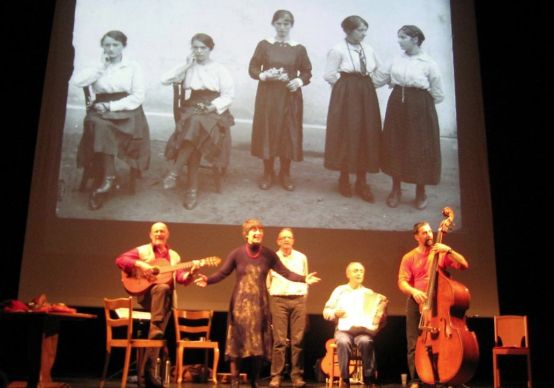New Ticino folk music
Vüna bèla! Translates roughly as: Play and sing something beautiful! Silvia Delorenzi has made a convincing selection of folk music albums from recent years.

Experimental folk music, as it has been observed in German-speaking Switzerland for over twenty years and documented by Musiques Suisses, Zytglogge and other CD publishers, is not really a topic among Ticino musicians. Nevertheless, there is something new to observe in contemporary folk music in southern Switzerland.
It is a stroke of luck that ethnomusicologist Silvia Delorenzi has spent years inventorying the folk music holdings of the Fonoteca Nazionale in Lugano and has become very familiar with the documented Ticino music. With a trained ear, the Ticino native has discovered original instrumentations and arrangements of traditional songs and dances, which are now available as an album in an excellent selection.
The editor has selected 19 tracks from eleven CDs - seven of them from the last three years - and added a new interpretation of the traditional Mailieds (Il maggio) by the ensembles Vox Blenii, Vent Negru and Duo di Morcote.
In traditional Ticino music, singing comes first. Often the ballads are even sung along by the accompanying instrumentalists in local dialects. Accordion, organetto (small diatonic hand harmonica), guitar, mandolin, violin, double bass and, more recently, saxophone and drums, grouped together in different ways, can still be heard as a typical feature in longer introductions and interludes. The vocal culture includes solo songs such as those of the wonderful amateur singer Luisa Poggi (Vox Blenii), polyphonic songs such as those of the vocal quartet La Cantora with the touching lullaby Oh Ninign and the choirs Cantori di Pregassona and Val Genzona, which together with the Ensemble Giangol onomatopoeically translate the northern foehn into music. The bandella, which is typical of the canton of Ticino and used to be a small ensemble made up of the leaders of a banda (brass band) in every village, has lost its function as dance music and has become rare. The five musicians of the formation Il Bagiöö (The Grapes) revived the tradition in 2008 and recorded a CD in 2015. Thanks to the virtuoso Duo di Morcote, the interplay between guitar and mandolin continues. The wind duo Verbanus uses an old, forgotten instrumentation, bagpipe and shawm. Thanks to Ilario Garbani, the piva is taught in a bagpipe school. The hand harmonica duo Aria Fina with Mauro Garbani as one of the bridge builders between old and new surprises with an arrangement of four montferrinas (montferrina: dance in six-eighths time from northern Italy). The singer-songwriter Marco Zappa is known throughout German-speaking Switzerland and can be heard here with Renata Stavrakakis, Ginger Poggi and friends.
The new release from Musiques suisses is accompanied by an introduction in four languages by Silvia Delorenzi. Unfortunately, the descriptions of the individual ensembles could only appear in Italian in the booklet, but with photos that show the instrumentation. However, it would be desirable to be able to read the texts of the 15 songs as well. The CD Vüna bèla! is a sonorous catalog of today's Ticino music and an informative listening pleasure. The new publication documents what has been forgotten in recent times: namely that the colorful sounds of the Ticino people are also part of Swiss folk music.
Vüna bèla ! Panorama popolare ticinese. Concept and commentary by Silvia Delorenzi. Musiques suisses MGB NV 36








